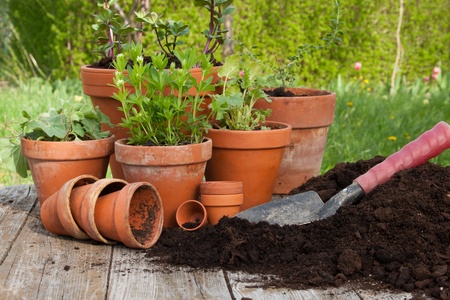What Is Xeriscaping?
Xeriscaping is a landscaping approach designed to reduce or eliminate the need for supplemental water from irrigation. The term comes from the Greek word “xeros,” meaning dry, and was first coined in Denver, Colorado during the 1980s as a response to recurring droughts in the American West. With roots deeply planted in regions where water is precious, xeriscaping has grown into a practical and beautiful solution for gardeners and homeowners who want to create sustainable, low-water landscapes. By choosing native plants, using mulch to retain moisture, and designing yards that work with the local environment, xeriscaping not only conserves water but also supports pollinators and reduces maintenance. In a time when water conservation matters more than ever, especially across the arid and semi-arid states, xeriscaping stands out as an eco-friendly alternative that blends resourcefulness with curb appeal.
Benefits of Xeriscaping
If you’re considering xeriscaping your yard, you’re not just making a personal choice—you’re joining a growing movement toward sustainability that’s taking root across America. Xeriscaping, at its core, is about using water-wise landscaping practices that are both eco-friendly and budget-conscious. But what does that really mean for your household and your community? Let’s break down the key benefits that make xeriscaping an attractive option.
Environmental Advantages
Xeriscaping directly addresses one of the biggest challenges in American landscaping: water scarcity. By choosing drought-tolerant plants and efficient irrigation methods, you dramatically reduce the demand on local water supplies. This means less stress on municipal systems during dry spells and droughts—something folks in states like California, Arizona, and Texas know all too well. Plus, because xeriscaped yards require fewer fertilizers and pesticides, there’s less risk of chemical runoff polluting nearby streams and rivers.
How Xeriscaping Supports Local Ecosystems
When you plant native species and minimize turf grass, you create a habitat that attracts pollinators like bees, butterflies, and hummingbirds. These creatures are crucial for healthy gardens and broader ecosystems. Your yard becomes a little oasis that supports biodiversity instead of working against it.
Economic Benefits
Xeriscaping isn’t just good for the planet—it’s great for your wallet, too. Traditional lawns can be surprisingly expensive to maintain when you factor in watering, mowing, fertilizing, and pest control. Xeriscaped yards slash these costs by favoring hardy plants that thrive with minimal attention. Here’s a quick comparison to help visualize the savings:
| Aspect | Traditional Lawn | Xeriscaped Yard |
|---|---|---|
| Water Usage (gallons/sq ft/year) | 24-36 | 6-12 |
| Annual Maintenance Cost | $500-$1,200 | $100-$300 |
| Pesticide/Fertilizer Use | High | Low to None |
Long-Term Investment Value
A well-designed xeriscape can boost curb appeal and even increase property value—especially in regions where water conservation is becoming the new normal. Many cities offer rebates or incentives for converting traditional lawns to xeriscapes, so check with your local utilities for potential savings.
In summary, xeriscaping offers clear environmental and economic advantages: it saves precious water, cuts maintenance costs, and turns your yard into a haven for local wildlife. It’s a smart way to landscape that truly fits the American spirit of innovation and stewardship.

3. Planning Your Xeriscape
Before you break out the shovel, successful xeriscaping starts with a thoughtful plan. Taking time to assess your yard and outline your goals will help you create a water-wise landscape that feels right at home in your neighborhood—and fits seamlessly with your lifestyle.
Assessing Your Yard
Start by walking around your property and taking notes. Pay attention to sunny and shady areas, slopes, drainage patterns, and soil types. Notice where water tends to collect or run off, and make a mental note of any existing plants you want to keep. You might even grab a notebook or snap some photos—this step is all about understanding what you’re working with.
Setting Realistic Goals
Next, think about how you use your outdoor space. Do you need a play area for kids or pets? A vegetable garden? Or maybe just a peaceful spot for morning coffee? Write down your priorities so your xeriscape design will truly reflect your family’s needs and habits. Don’t forget to set a realistic budget and timeline as well—it’s perfectly fine to tackle your yard in stages!
Designing for Your Climate and Lifestyle
Once you know what you want, sketch out a rough map of your yard. Divide it into zones based on water needs: high-use areas (like patios or veggie beds) can be closer to the house, while low-water zones go farther out. Choose native and drought-tolerant plants that thrive in your local climate—your county extension office or local nursery can provide great recommendations tailored to your ZIP code. Don’t forget to include paths, mulch, rocks, and other hardscape elements that reduce water use while adding beauty and function.
Pro Tip: Embrace Flexibility
Your first draft doesn’t have to be perfect! Xeriscaping is as much about experimenting as it is about planning. As seasons change, you may notice new sun patterns or discover favorite plants. Stay open-minded—you can always tweak things as you go along.
Ready to dig deeper?
The next steps will guide you through choosing plants and installing efficient irrigation systems so you can bring your water-saving vision to life.
4. Plant Selection for Water-Wise Gardens
Choosing the right plants is the heart of successful xeriscaping. Not only does plant selection influence how much water your landscape will need, but it also affects its beauty and resilience throughout the seasons. In the U.S., prioritizing native and drought-tolerant species is key to creating a water-wise garden that thrives with minimal irrigation.
Why Native and Drought-Tolerant Plants?
Native plants are adapted to your local climate, soil, and pests, which means they require less maintenance and watering compared to non-native varieties. Drought-tolerant plants, on the other hand, can survive long periods without supplemental water—making them perfect for xeriscaping in regions prone to dry spells or water restrictions.
Top Tips for Selecting Water-Wise Plants
- Research Your Region: Learn about your USDA Hardiness Zone and rainfall patterns before selecting plants.
- Group by Water Needs: Place plants with similar moisture requirements together (a method called hydrozoning) to maximize efficiency.
- Mix Textures and Colors: Combine grasses, succulents, perennials, and shrubs for visual interest all year long.
- Prioritize Perennials: They come back every year, saving you money and effort in replanting.
Examples of Popular Xeriscape Plants by Region
| Region | Native & Drought-Tolerant Options |
|---|---|
| Southwest | Lavender, Agave, Red Yucca, Desert Marigold |
| Pacific Northwest | Oregon Grape, Sword Fern, Penstemon |
| Southeast | Purple Coneflower, Black-eyed Susan, Little Bluestem |
| Northeast | Baptisia, Wild Bergamot, Switchgrass |
Remember, local extension offices and native plant societies are fantastic resources for finding plants that are not only beautiful but perfectly suited to your region’s conditions. By making thoughtful choices at this stage, you’ll set the foundation for a thriving, low-water landscape that’s both sustainable and welcoming—just like home should feel.
5. Soil Prep, Mulching, and Irrigation
If you’re serious about xeriscaping, getting your soil, mulch, and watering systems right is half the battle won. Let’s break down how these three elements work together to create a thriving, water-efficient landscape that looks beautiful and feels at home in the American climate.
Healthy Soil: The Foundation of Xeriscaping
First things first—healthy soil is non-negotiable. Before you plant anything, test your soil to see what you’re working with. Many regions in the U.S., especially in the Southwest and West, have sandy or clay-heavy soils that might not drain well or retain moisture efficiently. Amending your soil with organic matter like compost helps improve both drainage and water retention, giving plant roots the ideal environment to grow deep and strong. Good soil also encourages beneficial microbes and worms—nature’s own gardeners—to thrive, supporting your plants through long, dry spells.
The Right Mulch: Nature’s Blanket
Once your plants are settled in healthy soil, cover it up with a generous layer of mulch. In xeriscaping, mulch is more than just decorative—it’s essential. Organic mulches such as shredded bark, wood chips, or even pine needles help keep the soil cool, reduce evaporation, suppress weeds, and slowly break down to feed your plants over time. In hotter regions or for a more modern look, consider using gravel or decomposed granite. Just remember: whatever you choose should fit your climate and match the vibe of your yard.
Efficient Irrigation: Less Water, Smarter Watering
Water is precious—so let’s use it wisely. Ditch traditional sprinklers that waste water on sidewalks and driveways. Instead, install a drip irrigation system or soaker hoses that deliver moisture right where it’s needed: at the root zone of each plant. Drip systems are easy to set up (even for beginners) and can be connected to timers for hands-free watering—perfect for busy families or anyone wanting a low-maintenance yard. This method minimizes evaporation and keeps foliage dry, reducing the risk of disease.
Pro Tip:
Water early in the morning or late in the evening when temperatures are cooler—your plants will thank you and you’ll lose less water to evaporation.
Wrap-Up
Prepping your soil, mulching thoroughly, and installing efficient irrigation isn’t just smart gardening—it’s essential for any successful xeriscape in America. These steps save water, cut down on maintenance headaches, and ensure that your landscape thrives year after year—even when rainfall is scarce.
6. Maintaining Your Xeriscape
Once your xeriscape is established, keeping it looking its best is refreshingly simple compared to traditional lawns and gardens. Xeriscaping is all about working with nature, so minimal maintenance is key. Here’s how you can keep your water-efficient landscape thriving year-round with just a little know-how and some basic care.
Smart Watering Practices
The whole point of xeriscaping is to cut back on water use, but even drought-tolerant plants need a bit of hydration now and then. Focus on deep, infrequent watering—early mornings are best to minimize evaporation. Consider installing a drip irrigation system or soaker hoses to deliver moisture right where its needed without waste.
Mulching Matters
One of the simplest ways to maintain your xeriscape is by adding mulch. Organic mulches like wood chips or bark help retain soil moisture, suppress weeds, and regulate soil temperature. Check your mulch layer every season and replenish as needed—two to three inches usually does the trick.
Weed Control Without the Hassle
Weeds love open spaces, but thick plantings and a good layer of mulch will keep most unwanted guests at bay. When you do spot a weed, pull it quickly before it sets seed. For tough spots, try hand tools instead of chemicals for a more eco-friendly approach.
Pruning and Deadheading
Xeriscape plants generally don’t require much pruning, but trimming spent flowers (deadheading) and removing dead or damaged branches keeps everything tidy and encourages healthy growth. Time this for late winter or early spring when plants are dormant for best results.
Seasonal Touch-Ups
Each season brings small changes to your garden. In spring, check for frost damage and refresh mulch. Summer might mean extra vigilance with weeds or an occasional deep watering during heat waves. Fall is a good time to plant new perennials or divide existing ones, while winter offers a chance to plan for next year’s improvements.
Enjoy the View (and the Free Time!)
The beauty of xeriscaping is that once you get things rolling, there’s less work for you—and more time to relax in your beautiful, sustainable yard. With just a bit of seasonal attention, your xeriscape will stay vibrant and inviting all year long, making it both eco-friendly and easy to love.
7. Real-Life Success Stories
Get inspired by American homeowners and communities who’ve gone xeric and love the results. All across the United States, from arid Southwest cities like Phoenix to surprisingly dry neighborhoods in Colorado and California, people are transforming their landscapes with xeriscaping—and seeing big payoffs. Take, for example, the Johnson family in Albuquerque, New Mexico. After swapping out their thirsty lawn for native grasses, gravel pathways, and flowering cacti, they cut their water bill by nearly 60% while creating a lively outdoor space that attracts pollinators. Similarly, community-led initiatives in Austin, Texas have transformed entire blocks into lush yet low-water oases using drought-tolerant perennials and creative stonework. These projects not only save water but also build stronger community bonds as neighbors share resources and gardening tips.
Homeowners’ Voices
“Switching to xeriscaping was the best decision we made,” says Emily from Denver. “We spend less time mowing and more time enjoying our yard. Plus, the butterflies love it!” Across the country, others echo her experience—less maintenance, lower costs, and a newfound appreciation for local plant life.
Community Projects Making a Difference
In Los Angeles, neighborhood associations have partnered with city officials to offer rebates for homeowners who remove grass lawns and install drought-resistant landscaping. These programs have led to dramatic reductions in municipal water use while turning once-barren spaces into vibrant gardens filled with agave, lavender, and succulents. The ripple effect is clear: as one yard transforms, neighbors are inspired to follow suit.
Your Turn: Start Small or Dream Big
No matter your climate or lot size, xeriscaping can work for you. Whether you’re planting a single bed of native wildflowers or reimagining your entire front yard, every step toward water efficiency makes a difference. Let these real-life stories motivate you—your own xeric success could be next!


